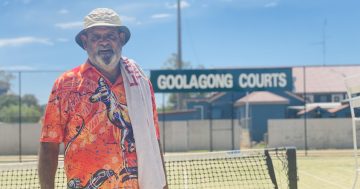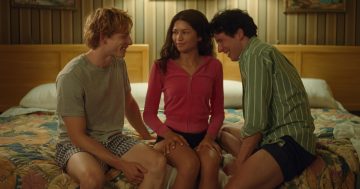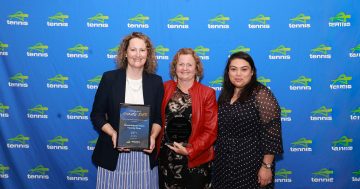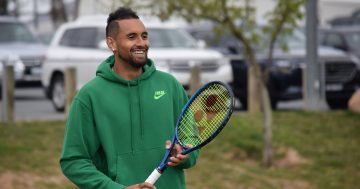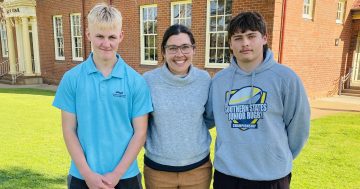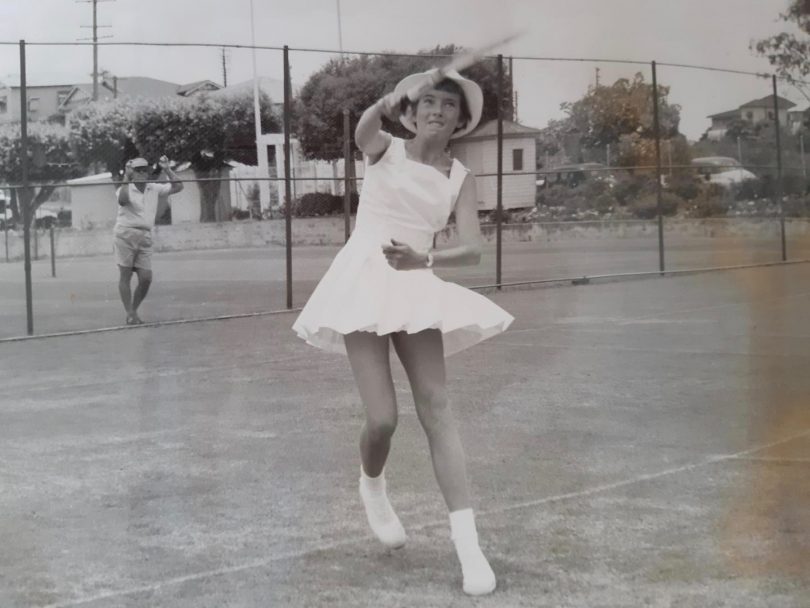
Helen at her first Australian Open in Brisbane at just 13. Photo: Supplied.
In the current era of professional tennis, it is hard to imagine a 13-year-old girl playing in the main draw of the Australian Open.
For Helen Gourlay, it seemed like a natural progression. As a 12-year-old she was the top open women’s player in Tasmania. But in her debut at the Australian Open, Helen was drawn to play Margaret Court, who would go onto win 24 Grand Slam singles titles.
“It was unbelievable to play Margaret; I was proud when I won a point,” remembers Helen.
Australian coach Harry Hopman obviously realised the 13-year-old from Tasmania was a prodigious talent, and she was selected to train with the Davis Cup and Fed Cup teams in the National Training Squad.
Says Helen, “I was on court training with Laver, Stolle and Emerson as a 13-year-old”.
The work ethic instilled by Hopman was legendary and effectively set Helen up for the future as she became renowned for the effort she applied to training and preparation.
Helen finished schooling at 15 years of age and moved to Sydney to be coached by Brian Hudson. Helen lived with Brian and his wife Beryl, and was a nanny to their six children.
After 18 months she began to be coached by Vic Edwards at the same time that Evonne Goolagong moved from Barellan to the Edwards’. Helen was employed as the secretary at the Victor A. Edwards Tennis School until she had saved enough money to head off on an overseas tour.
“I headed overseas as a 19-year-old and started travelling the world as a professional tennis player,” Helen explains.
In an interview earlier this year with the Women’s Tennis Association, Helen spoke about life on the tour in the 1960s: “In 1967, after my second year on the tour, I returned home and was really struggling with life on the tour. There was very little money, and many a night I had to sleep in train stations or airports to save accommodation.
“Most of the little hotels and pensions I stayed in were brothels. We could make money by umpiring on the French Riviera circuit. When I wasn’t on the court, I would be up in the umpire’s chair and be paid five Francs, which was about one US dollar.
“When I returned home, I played the Aussie circuit and then decided to have a break. For three months, I didn’t pick up a racquet but went out training with an athletics squad, as I loved running. The coach used me as a pacer for his sprinters! After three months, the coach started training me by myself and then one day told me to pick up my racquet. I realised then how much I loved tennis and have never put the racquet down since!”
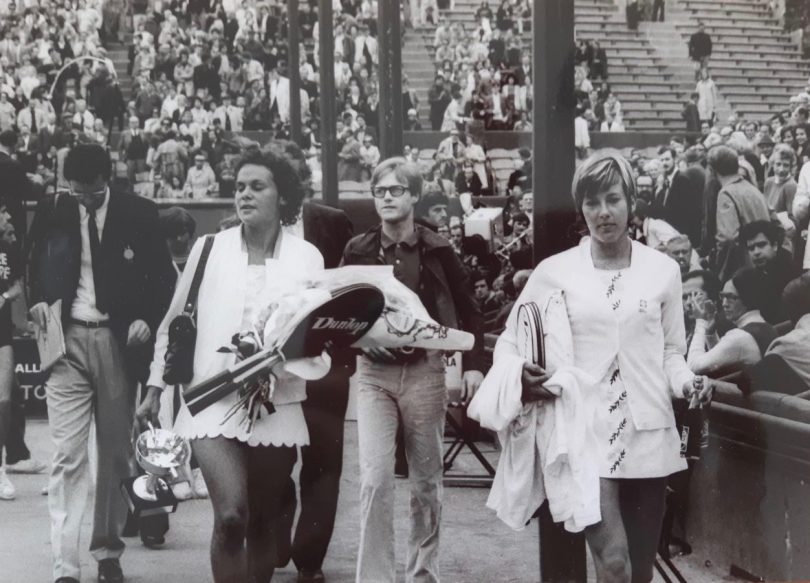
Helen at the French Open Final in 1971. Photo: Supplied.
Such was Helen’s prodigious talent, she would go on to play against another incredibly talented Australian player, Evonne Goolagong Cawley, in the final of the French Open in 1971 and the Australian Open in 1977.
Goolagong Cawley was just 19 years old when she defeated Helen in the final of the French Open. Evonne was again victorious when they met in the Australian Open decider.
“I played Sue Barker in the semi-final. She was expected to win but I had a plan and it came off and I made it through. Evonne played very well in the final,” says Helen.
“Evonne and I were great mates on and off the court. We played doubles together.”
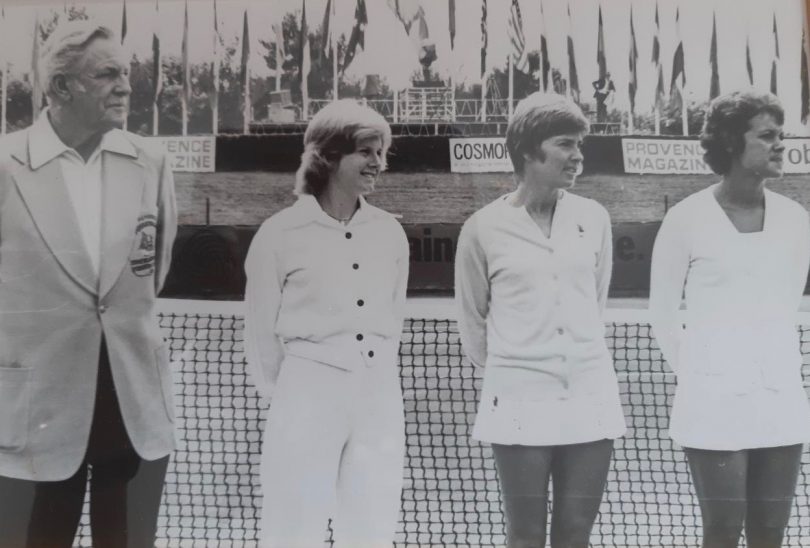
At the 1975 Fed Cup in France: Vic Edwards, Dianne Fromholtz, Helen Gourlay and Evonne Goolagong. Photo: Supplied.
Helen won 20 career titles in doubles including the Australian Open four times. A highlight was in the 1977 Wimbledon doubles final. She teamed up with Joanne Russell to defeat the top seeds Martina Navratilova and Betty Stove, a remarkable achievement given Helen hadn’t met Joanne before teaming up in the first round.
Her record in singles is impressive. As well as making the final of the Australian and French Opens she made the fourth round at Wimbledon three times, and the quarter-final of the US Open. She also captained the Australian Fed Cup team.
Her highest ranking in singles was 12th in the world in 1971.
Helen retired in 1978 at 32 years of age when she became pregnant with her first-born daughter Alysia.
Three years later she moved to Canberra to be the inaugural tennis coach at the Australian Institute of Sport in 1981. It was the first of two stints at the AIS for Helen where the talent emerging included the likes of Pat Cash and Wally Masur.
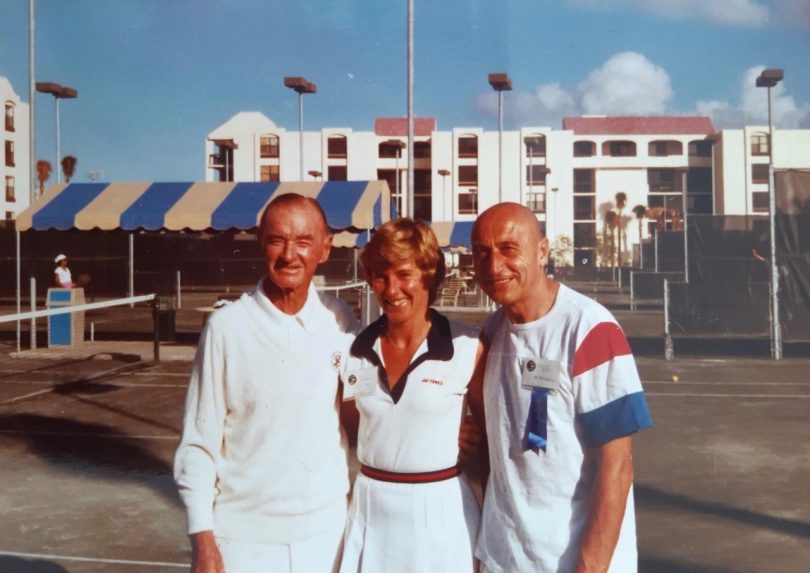
Helen in Miami in 1982, where she was coaching with Harry Hopman and French Federation coach, Gil De Kermadec. Photo: Supplied.
When the AIS program relocated to Melbourne Helen stayed in Canberra to set up the ACT Academy of Sport Tennis Program. She subsequently became the ACT State Coach.
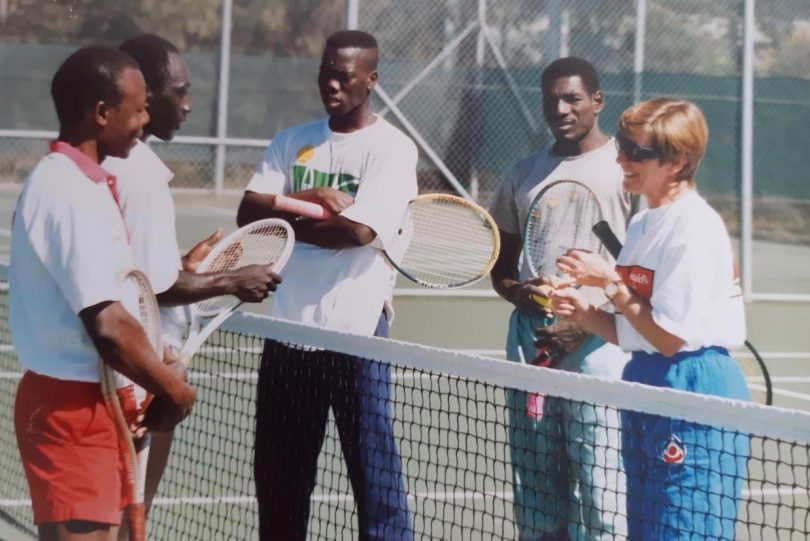
Helen with Mali and Ugandan athletes and coach as part of the African Olympic Training Program, held at the AIS in the late 1990s. Photo: Supplied.
In 2005 she stepped away from these programs to focus on nursing her mother, who was very ill at the time.
Despite the move away from ACTAS, Helen continued coaching many local players in her backyard court.
At 74 years of age, she shows no sign of pulling back from the sport that has given her so much. In turn, Helen has demonstrated that tennis is a sport for life.
“I’m still coaching five days a week,” says Helen. “I play every day. Tennis keeps you young, and I enjoy it out there. I get a lot of satisfaction out of helping others.”
Many within the Canberra community are thankful that Helen accepted the offer to come to the city in 1981. She has given so much to the great sport of tennis, and it has in return, given so much enjoyment to her life and the lives of others.
Original Article published by Tim Gavel on The RiotACT.







